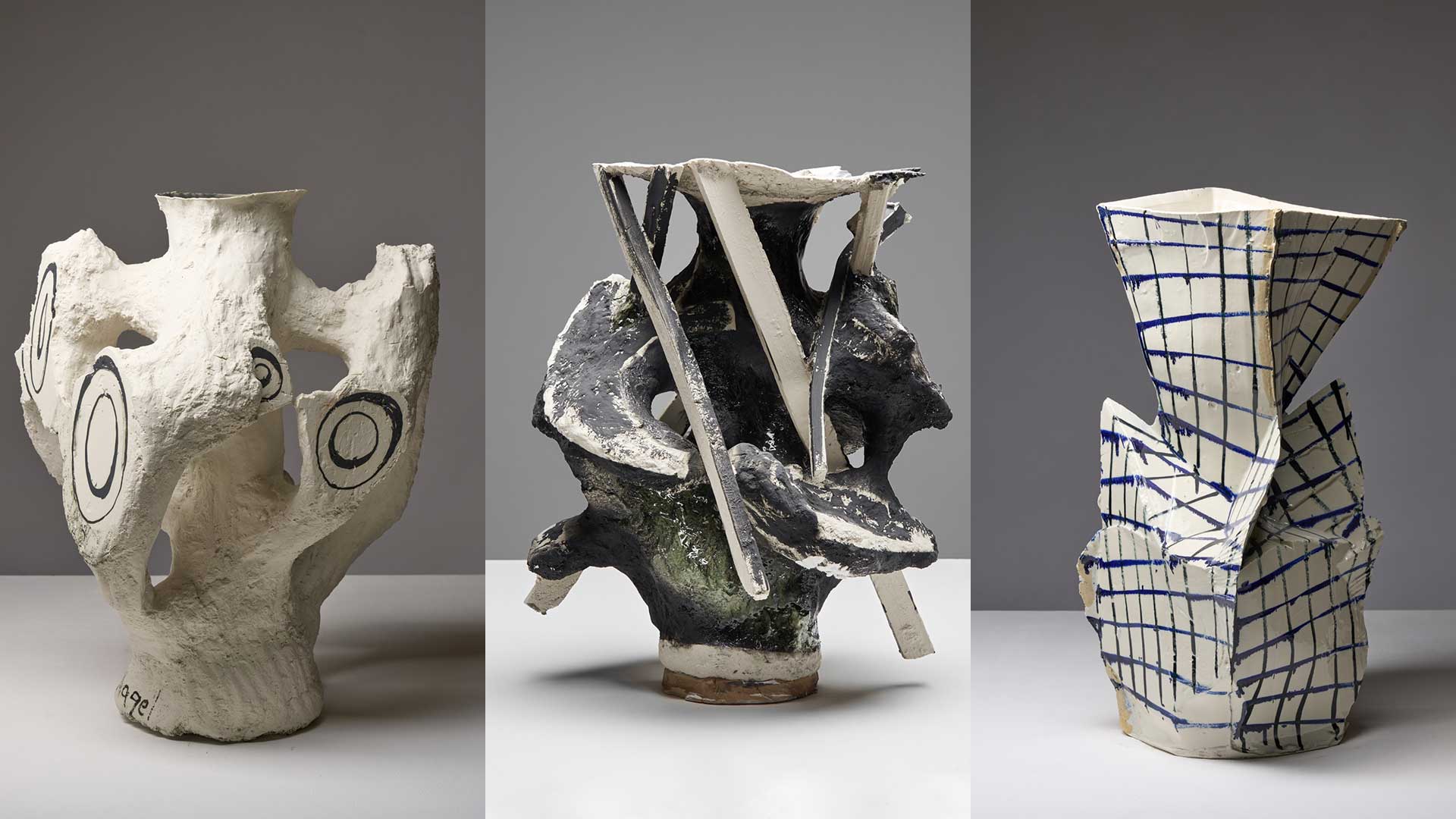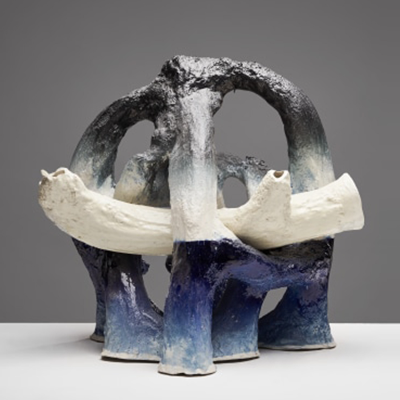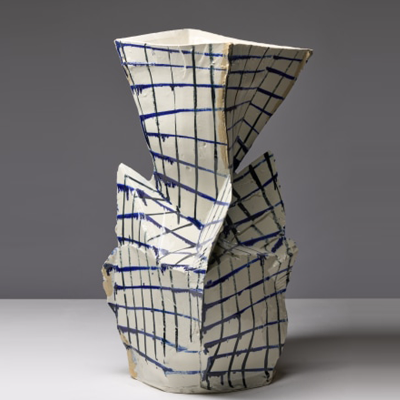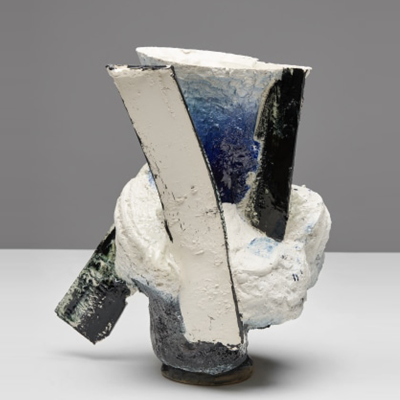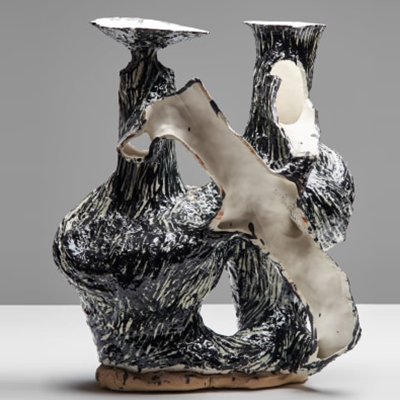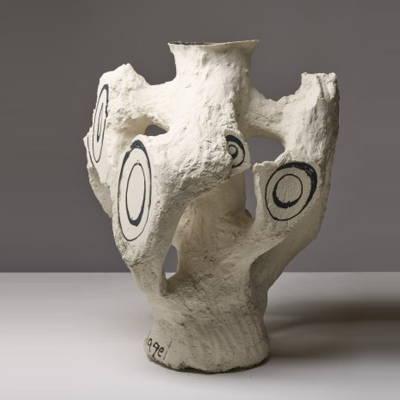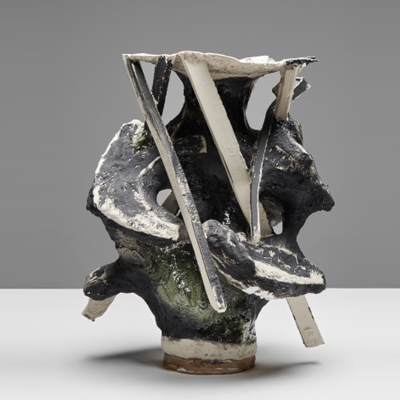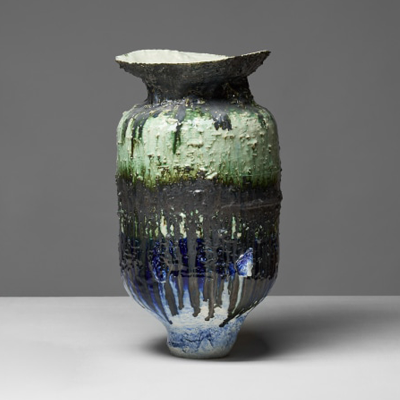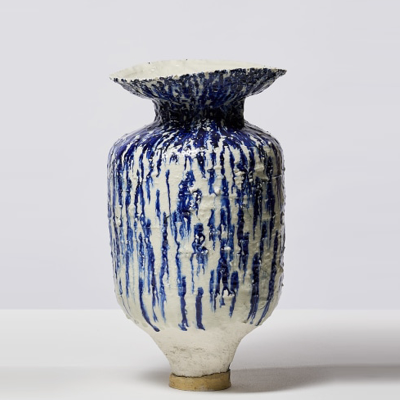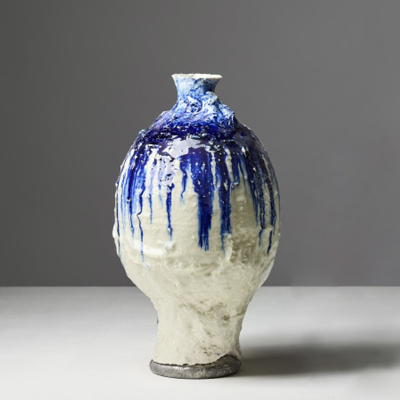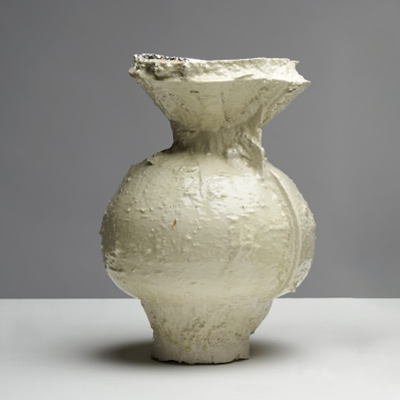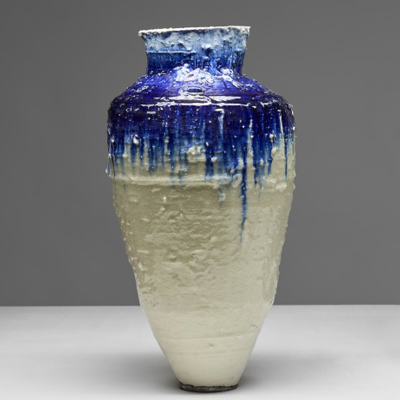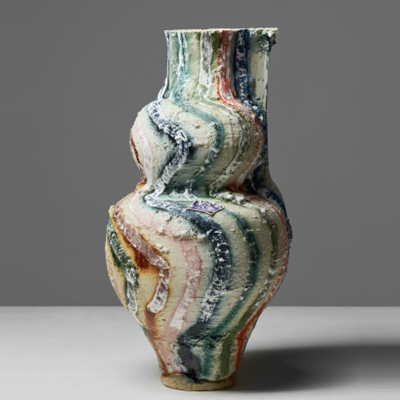What exactly is a vase? What defines a vessel? The form itself, with its rich historical background and flurry of contemporary interpretations, poses many open-ended questions.
Thus, we are thrilled to showcase recent works by Johannes Nagel— an artist dedicated to exploring the myriad ways of creating a vessel, not only dissecting the historical and modern meanings of the term vase but also deconstructing the very techniques and materials involved in crafting one, taking the use of slip and the painterly application of glaze to an entirely new level.
For years, Nagel has responded to the subtle, provocative questions posed by the historical idea of a vase by pushing through to further lines of inquiry. Rather than attempting to demonstrate what a vase is, he asks: What functions does a vase serve in today’s world? And what can it hold?
That is to say, Nagel is not only working with the formal qualities of the vase— he is working with its history and symbolic role in culture. Through his exploration, Nagel employs a methodology that draws from twentieth-century art, criticism, and theory. His vases stand out not only for their broad strokes of colour but also for their prominent and visible signatures, a deliberate shift away from the traditionally discreet stamps and maker’s marks found on the undersides of pottery. Instead of closing in on themselves, Nagel’s vessels sometimes appear to have been sliced or split open, are quite rough around the extremities, and feature plenty of holes, for their interiors complement and compete with their exteriors— as vessels go, it’s beyond the literal idea of an idea of containment.
Most curiously, and despite his proficiency at the potter’s wheel, Johannes Nagel makes most of his works by pouring clay slip into sand casts which he sculpts and forms— or better yet, excavates— by hand. There is a great, cosmic irony here: before one of Nagel’s vessels comes to be, it is poured into a container, like water into a vase.
Yet, Nagel dismisses the vase’s traditional association with flowers; his work is made to contain something transcendent.
Read more +
Read less -







 Sign in with email
Sign in with email


